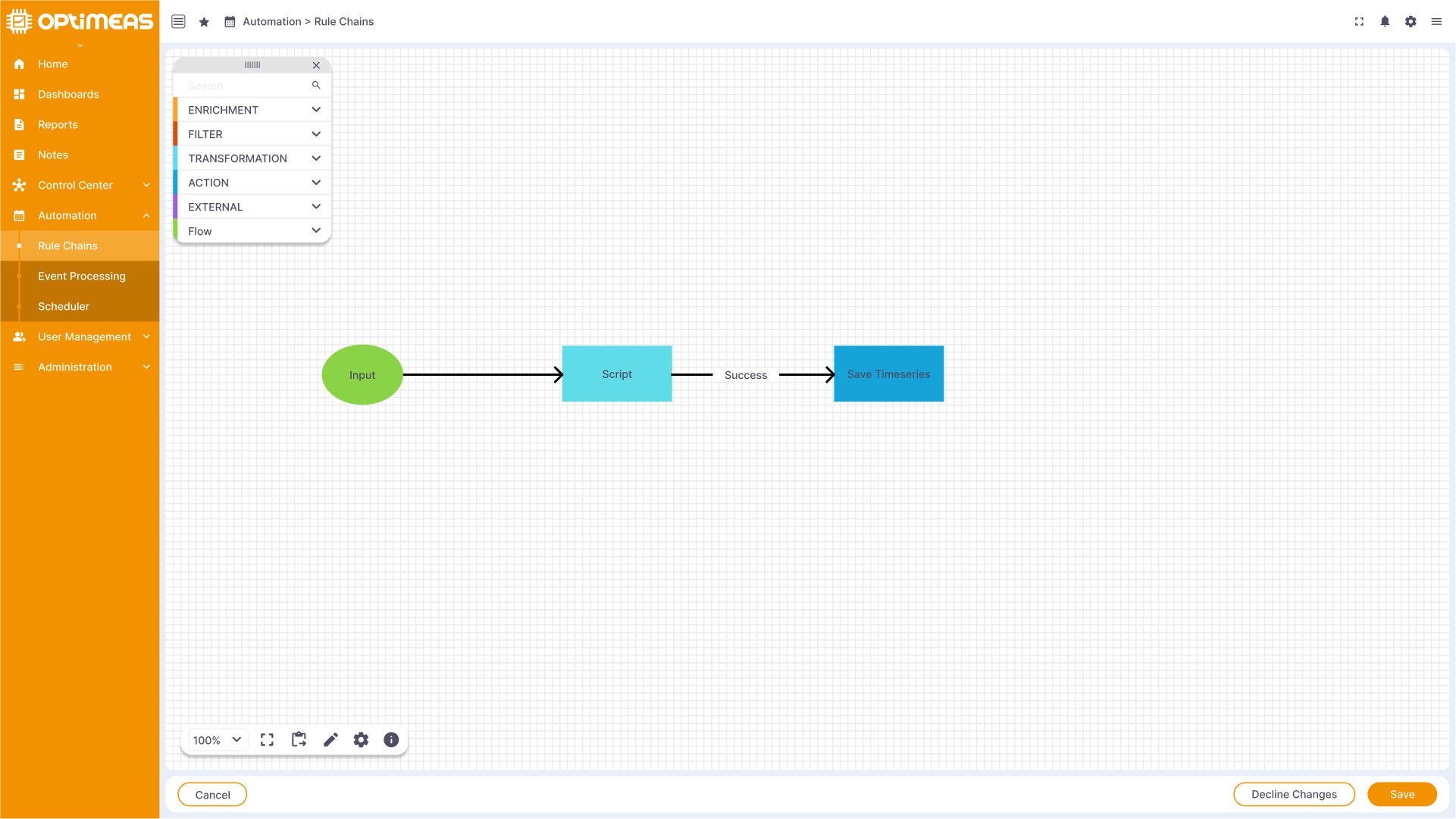Rule chains in the IoT platform

The Rule Engine is a highly customizable and powerful visual development tool that facilitates the integration of IoT devices and the automation of processes in your IoT platform. A fully configurable system for processing complex events. The rules engine allows you to filter, enrich and transform incoming messages from IoT devices. You also have the option of triggering various actions, such as notifications or communication with external systems.
The integration of Rule Chains in optiCLOUD offers a variety of possibilities to extend your IoT projects, to automate them or to otherwise benefit from the automation of workflows. Some advantages that can be realized with the use of RuleChains.
-
Flexibility: Rule Chains allow you to create customized flows and implement complex logic without extensive programming knowledge.
-
Real-time monitoring: Rule Chains provide debug and monitoring functions to test your flows and get a real-time view of your flows, making troubleshooting easier.
-
Integration: Rule chains can be seamlessly integrated into existing systems and services to enable communication between different internal and external components.
The rule chains you have created are initially displayed in a table in the overview to provide a quick overview of the created and active rule chains and their connections to each other.
Rule Chain Editor

Rule engine message
The rule engine message is a serializable, immutable data structure that represents various types of messages in the system, including:
- Incoming telemetry, attribute updates or RPC calls from devices.
- Events in the life cycle of devices: creation, update, deletion, assignment, non-assignment and attribute update.
- Device status events: Connected, Disconnected, Active, Inactive, etc.
- Other system events.
The rule engine message contains the following information:
- Message ID:: A time-based, universally unique identifier.
- Sender:: The identifier of the device, user, tenant, prroject or similar.
- Type: e.g. "Post-Telemetry", "Post-Attributes" or "Inactivity Event".
- Content: A JSON text with the actual content of the message.
- Metadata: A list of meta information with additional information about the message.
Control node
The rule node is a fundamental component of the rule engine. Each rule node processes a single incoming message and generates one or more outgoing messages. The rule node is the main logical component of the rule engine. A rule node can filter, enrich and transform incoming messages, trigger actions or communicate with external systems.
Control lines
The control lines connect individual control nodes to each other. Depending on the reel node
Control node
Enrichment
| Node | Description |
|---|---|
| Device Attributes | |
| Originator Attributes | |
| Originator Fields | |
| Originator Telemetry | |
| Tenant Details |
Filter
| Node | Description |
|---|---|
| Check Existence Fields | |
| Device Filter | |
| File Names Filter | |
| File Type Switch | |
| GPS Geofencing Filter | |
| Message Type | |
| Message Type Switch | |
| Script | |
| Switch |
Transformation
| Node | Description |
|---|---|
| Script | |
Action
| Node | Description |
|---|---|
| Aggregate JSONL File | |
| Aggregate OSF File | |
| Alarm Counter | |
| Clear Alarm | |
| Complex Alarm | |
| Complex Event Processing | |
| Create Alarm | |
| Generate Report | |
| Generator | |
| GPS Geofencing Events | |
| Log | |
| Message Count | |
| Process Raw Datafile | |
| RPC Call Reply | |
| RPC Call Request | |
| Save Alarms | |
| Save Attributes | |
| Save Timeseries | |
| Save to custom Table |
External
| Node | Description |
|---|---|
| AWS SNS | |
| AWS SQS | |
| GCP Pub/Sub | |
| Kafka | |
| MQTT | |
| RabbitMQ | |
| REST API Call | |
| Send Mail |
Flow
| Node | Description |
|---|---|
| RuleChain |